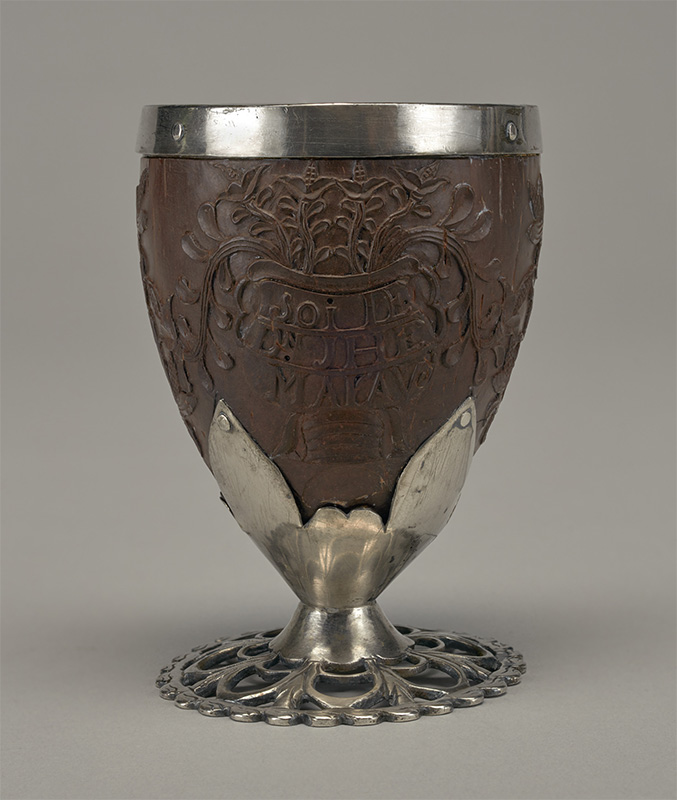The Material World of the Spanish Colonial Estrado
Click on images to enlarge them and view captions.
by Jorge F. Rivas Pérez
Sometimes a separate room or a sectioned-off portion of a reception room, the estrado was the most important feminine space in elite Spanish homes. It was a gendered space where women could educate their children and entertain their guests at a time when women’s adherence to strict respectability rules and moral codes determined the family’s honor and reputation. The term estrado usually refers to a wooden raised platform with a carpet on top and furnished with cushions, low tables, and small case furniture. The concept originated in Medieval Islamic Spain, and was later adopted across the Iberian Peninsula. By the early 1300s, the estrado was clearly identified as the woman’s intimate place at home. Like in Spain, in Colonial Spanish America, elite women sat cross-legged on velvet cushions with gold trimmings—or on very low settees placed along the walls in the 1700s (figure 1)—almost without changing their position, while their male visitors sat on chairs just outside the platform. Women would spend the day sewing, chatting, reading, playing musical instruments, singing, and often smoking while entertaining close acquaintances. Servants would place meals on low tables or on top of small chests in which the ladies kept their needlework. Estrados were lavishly decorated with fine furniture, paintings, mirrors, sculptures, and small cabinets filled with precious objects, all set up against a low fabric wall hanging called rodaestrado. In early 18th-century Spain, the estrado fell into disuse, primarily due to French court etiquette and the social practices introduced by the new Bourbon king. However, in Spanish America, the estrado remained in use well into the 1840s.
The material world of the estrado was the embodiment of wealth and conspicuous consumption. The costly objects and furniture displayed and used on the estrados were made in the Americas or imported from Europe or Asia and revealed the refined tastes, collecting practices, and social aspirations of their owners. Small storage boxes and trunks of different designs made of a range of fine materials including wood, leather, tortoiseshell, silver, and mirror glass (figure 2) were incorporated. Portable writing desks and writing boxes also appear in estrado inventories. Writing desks decorated with allegories were particularly prized in this context because they functioned as signifiers of their owner’s culture and education. Affluent Spanish Americans collected and displayed precious objects of different origins and qualities. Colonial inventories portray this wide variety, including Asian ivories, religious souvenirs from the Holy Land, small religious images, porcelain and pottery, glass and alabaster figurines (figure 3), gold and silver artifacts, bezoar stones, as well as coral branches and other natural curiosities. Housed in small display cabinets with glass or wire-mesh doors set against the walls of the estrado, these rare and curious artifacts from around the world conveyed prestige and influence in the same manner as the Kunst und Wunderkammer.
The service of drinks on the estrado was an occasion to demonstrate prosperity and adhere to the most fashionable social rituals. Hosts offered their guests fresh water in clay beakers—búcaros—from Tonalá, Mexico (figure 4) along with sweet biscuits for dipping. These highly prized ceramics helped lower the water temperature because their porous nature facilitated evaporation. The beakers also imparted a unique, earthy fragrance to the water. In the 1600s, fashionable upper-class women ate small pieces of the búcaros. Historical accounts mention the unique taste of Tonalá earthenware but also comment on its apparent health benefits. Ingesting the clay was believed to aid digestive problems and improve complexion.
Unknown to Europeans before the conquest, chocolate was perhaps the preferred beverage on the estrado. Originally made from the ground seeds of the native cacao, mixed with chili peppers, honey, and water, the Spaniards modified the recipe to suit their tastes, substituting sugar and vanilla. Chocolate’s popularity spurred the development of specialized implements to prepare and serve the beverage, including mancerinas (saucers with holders for chocolate cups), bernegales (double-handled drinking cups), silver-mounted coconut shells (figure 5) and gourds, small glazed pottery, and Chinese porcelain cups.
The estrado disappears in Latin America in the mid-1800s, a victim of changing tastes and new fashions. Only those precious objects and furniture that adorned the most private feminine domestic spaces remain scattered in homes, private collections, and museums. They are silent witnesses of past splendors and forgotten customs.
Jorge F. Rivas Pérez is the Frederick and Jan Mayer Curator of Latin American Art and Department Head at the Denver Art Museum.
A print version of this article was published in The Magazine of the Decorative Arts Trust, one of our most popular member benefits. Join today!





